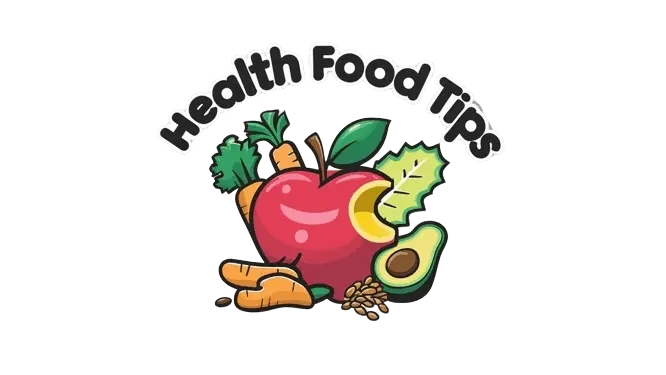Chicken breast is a highly nutritious, lean protein source that offers significant health benefits. It is rich in protein, low in fat, and provides essential vitamins and minerals, making it an ideal choice for individuals looking to maintain a healthy diet or build muscle. Whether grilled, baked, or stir-fried, it remains one of the most popular food choices for health-conscious individuals.

Content
Nutritional Overview of Chicken Breast
Understanding Chicken Breast Nutrition
Chicken breast is well-known for its impressive nutritional profile. It is primarily composed of protein, which plays a key role in muscle building, repair, and overall bodily function. A 100g serving of cooked chicken breast contains approximately 31g of protein, making it one of the most efficient sources of lean protein. This makes it a perfect food choice for athletes, bodybuilders, and those seeking a high-protein diet.
In addition to protein, chicken breast provides small amounts of essential vitamins such as B6 and niacin (vitamin B3), both of which are important for energy metabolism and overall health. It also contains minerals like phosphorus and selenium, which support bone health and immune function.
- Calories: 165 calories per 100g
- Protein: 31g
- Fat: 3.6g
- Carbohydrates: 0g
Comparison with Other Proteins
When compared to other popular protein sources like chicken thighs, beef, or fish, chicken breast stands out as one of the leanest options. While chicken thighs provide slightly more fat, chicken breast offers a higher protein-to-calorie ratio, making it an optimal choice for those looking to increase muscle mass or reduce body fat.
In contrast, beef and fatty fish like salmon contain significantly more fat per serving, which can add to the overall calorie intake, making chicken breast a better option for those on a calorie-conscious diet.
- Chicken Thighs vs Chicken Breast: Chicken thighs typically contain around 8g of fat per 100g serving, while chicken breast only contains 3.6g of fat. Thus, chicken breast is a more low-fat option.
Nutritional Breakdown per Serving
Nutritional Composition per 100g
A 100g serving of chicken breast provides an excellent balance of nutrients that supports a wide range of health benefits. As previously mentioned, it contains:
- 165 calories
- 31g of protein
- 3.6g of fat
- 0g of carbohydrates
This macronutrient profile makes chicken breast an excellent choice for anyone following a high-protein, low-calorie diet.
In terms of micronutrients, chicken breast is a good source of vitamin B6 and niacin. Vitamin B6 plays a crucial role in neurotransmitter function and immune system support, while niacin helps with energy production and DNA repair.
- Sodium: 74mg (low sodium content)
- Phosphorus: 200mg
- Selenium: 27.6mcg
Health Benefits of Chicken Breast
Including chicken breast in your diet offers several health benefits:
- Muscle Building and Repair: The high protein content in chicken breast is ideal for muscle repair and growth. Protein helps to repair tissue after exercise, making it especially beneficial for athletes and fitness enthusiasts.
- Weight Management: Due to its low calorie and fat content, chicken breast is a go-to food for those looking to lose or maintain weight. It keeps you feeling full while providing the nutrients your body needs.
- Bone Health: The phosphorus and selenium in chicken breast support bone density and immune function.
- Cardiovascular Health: The low-fat content of chicken breast, especially when compared to fatty meats, contributes to heart health by reducing the intake of unhealthy fats.
Preparing and Cooking Chicken Breast
Impact of Cooking Methods on Nutritional Value
The way you prepare chicken breast can affect its nutritional profile. For example, frying chicken breast can significantly increase its fat and calorie content due to the oils used in the process. On the other hand, grilling or baking chicken breast with minimal added fat retains most of its nutrients while keeping it low in calories.
Healthy Cooking Methods:
- Grilling: This method adds a smoky flavor while keeping the chicken breast’s calorie count low.
- Baking: Another great method, especially when using minimal oil or butter.
- Boiling: Boiling chicken breast is one of the most effective methods to retain its protein content without adding extra fat.
By choosing health-conscious cooking methods, you can maximize the nutritional value of chicken breast while keeping it flavorful.
Maximizing Nutritional Value Through Preparation
To make the most of the chicken breast’s nutritional content, consider the following tips:
- Remove the Skin: The skin of chicken breast adds extra fat and calories. By removing it before cooking, you reduce the overall calorie count.
- Minimal Oil: Use a non-stick pan or grill, or opt for a small amount of healthy oils like olive oil to keep the fat content low.
- Marinate for Flavor: Marinating chicken breast in herbs and spices can enhance its flavor without adding unnecessary calories or fat.
By following these tips, you can maintain the health benefits of chicken breast while enjoying a delicious and nutritious meal.
Chicken Breast in Different Diet Plans
Incorporating Chicken Breast into a Weight Loss Diet
Chicken breast is an excellent choice for anyone following a weight loss diet. Due to its low-calorie content and high protein, it helps keep you feeling satisfied without overloading you with excess calories. Additionally, its low-fat content supports a healthy heart and minimizes fat intake.
Many low-calorie diets, such as keto or low-fat diets, rely on chicken breast as a core component due to its macronutrient profile. For weight loss, it’s best to prepare chicken breast without heavy sauces or breading, which can increase calorie counts.
Using Chicken Breast for Muscle Building
Chicken breast is a favorite among those looking to build muscle. With a high protein content (31g per 100g), it provides the essential amino acids necessary for muscle repair and growth. Consuming a lean protein source like chicken breast post-workout aids in muscle recovery and supports muscle development.
Whether you’re a bodybuilder, athlete, or someone looking to gain lean muscle mass, chicken breast should be an essential part of your high-protein diet.
Including Chicken Breast in a Balanced Diet
Incorporating Chicken Breast into Daily Meals
Incorporating chicken breast into your daily meals is simple and offers endless variety. You can enjoy it as the main protein in a salad, sandwich, or wrap. Try grilling it and pairing it with roasted vegetables for a balanced and healthy meal. Additionally, chicken breast can be added to soups, stews, or stir-fries for an extra protein boost.
Including chicken breast in your meals is a delicious way to ensure you’re getting the essential protein and nutrients your body needs to stay healthy.
Conclusion
Chicken breast is an excellent source of lean protein, making it an essential food for those pursuing a healthy lifestyle. Whether you are looking to build muscle, lose weight, or maintain a balanced diet, incorporating chicken breast into your meals offers countless benefits. By choosing healthy cooking methods and enjoying it as part of a well-rounded diet, you can take full advantage of its nutritional benefits.
FAQs
How Many Calories Are in a Chicken Breast?
A standard 100g serving of chicken breast contains approximately 165 calories, making it a low-calorie protein option. However, the calorie count can vary depending on cooking methods, such as frying, which may increase the calorie content due to the added fat.
Is Chicken Breast Healthy for You?
Yes, chicken breast is considered one of the healthiest protein sources due to its low-fat and high-protein content. It provides essential nutrients such as vitamin B6, niacin, and phosphorus, making it an ideal choice for individuals aiming to maintain a healthy diet or lose weight.
What’s the Best Way to Cook Chicken Breast to Retain Nutrients?
The best way to cook chicken breast while retaining its nutrients is by grilling, baking, or boiling it. These methods help preserve its protein content without adding excessive fat or calories. Avoid frying to prevent unnecessary fat absorption.

Jesus is a health blog author who has been writing about nutrition, fitness and healthy living for over 10 years. He also loves to run, hike and bike with her wife.


